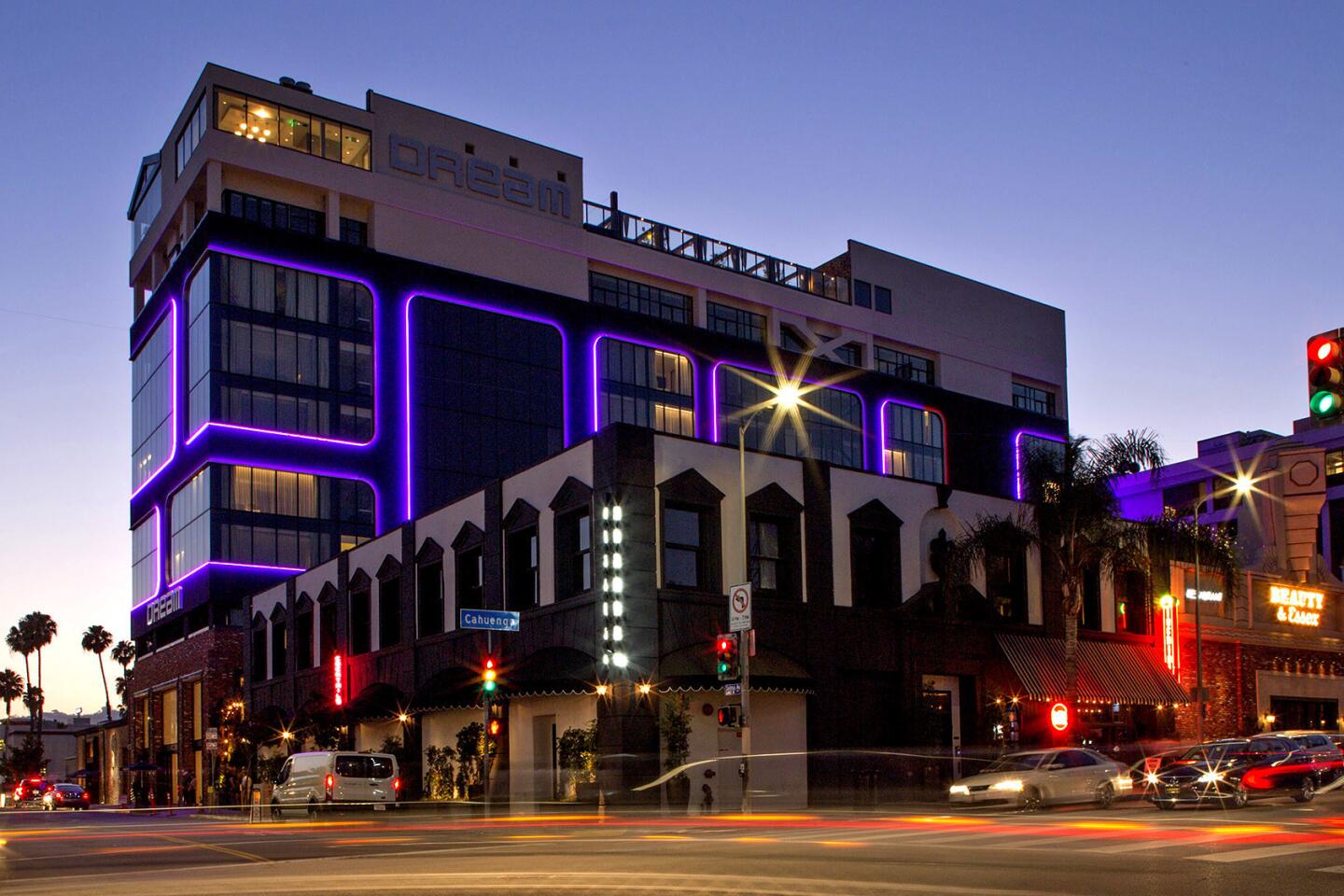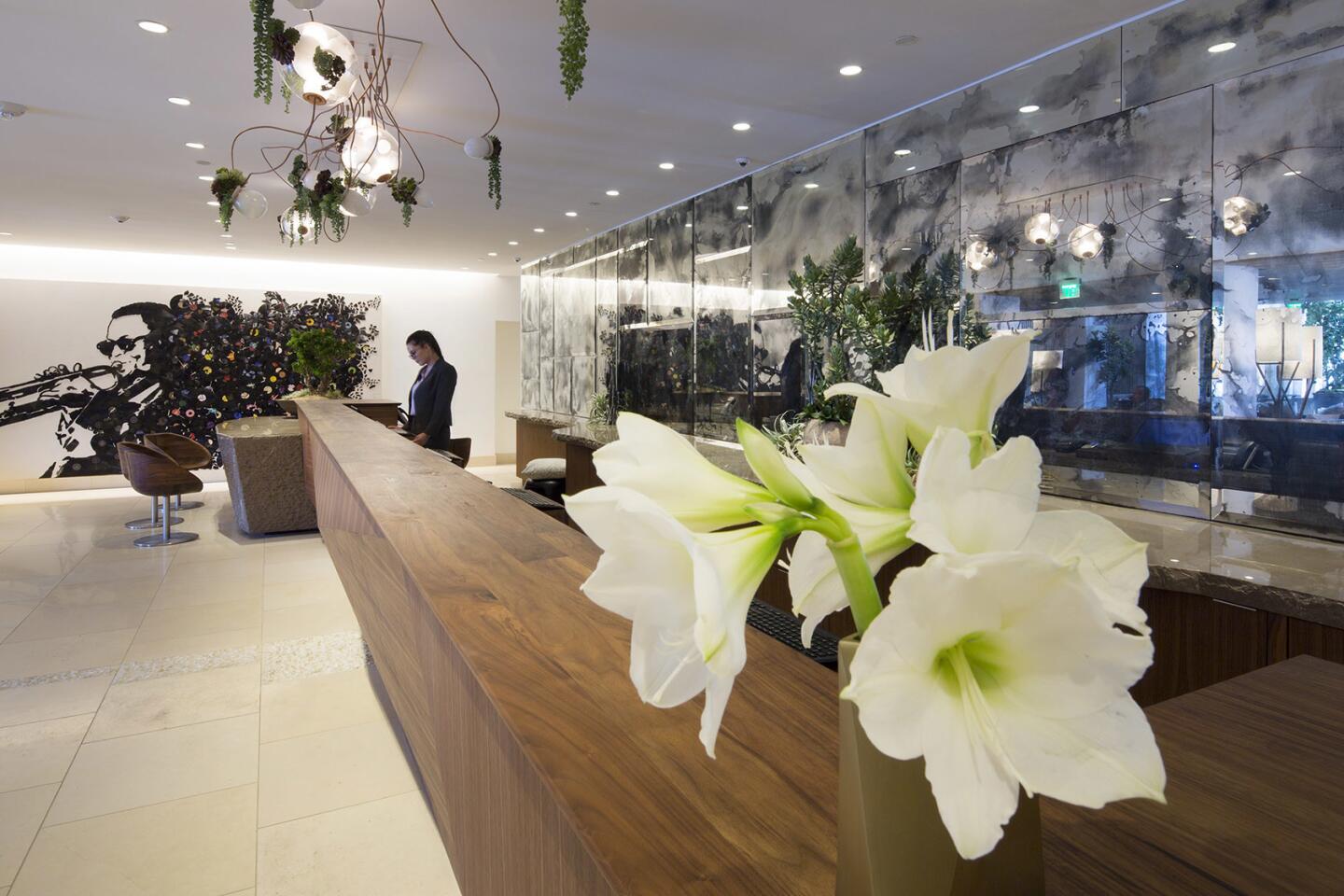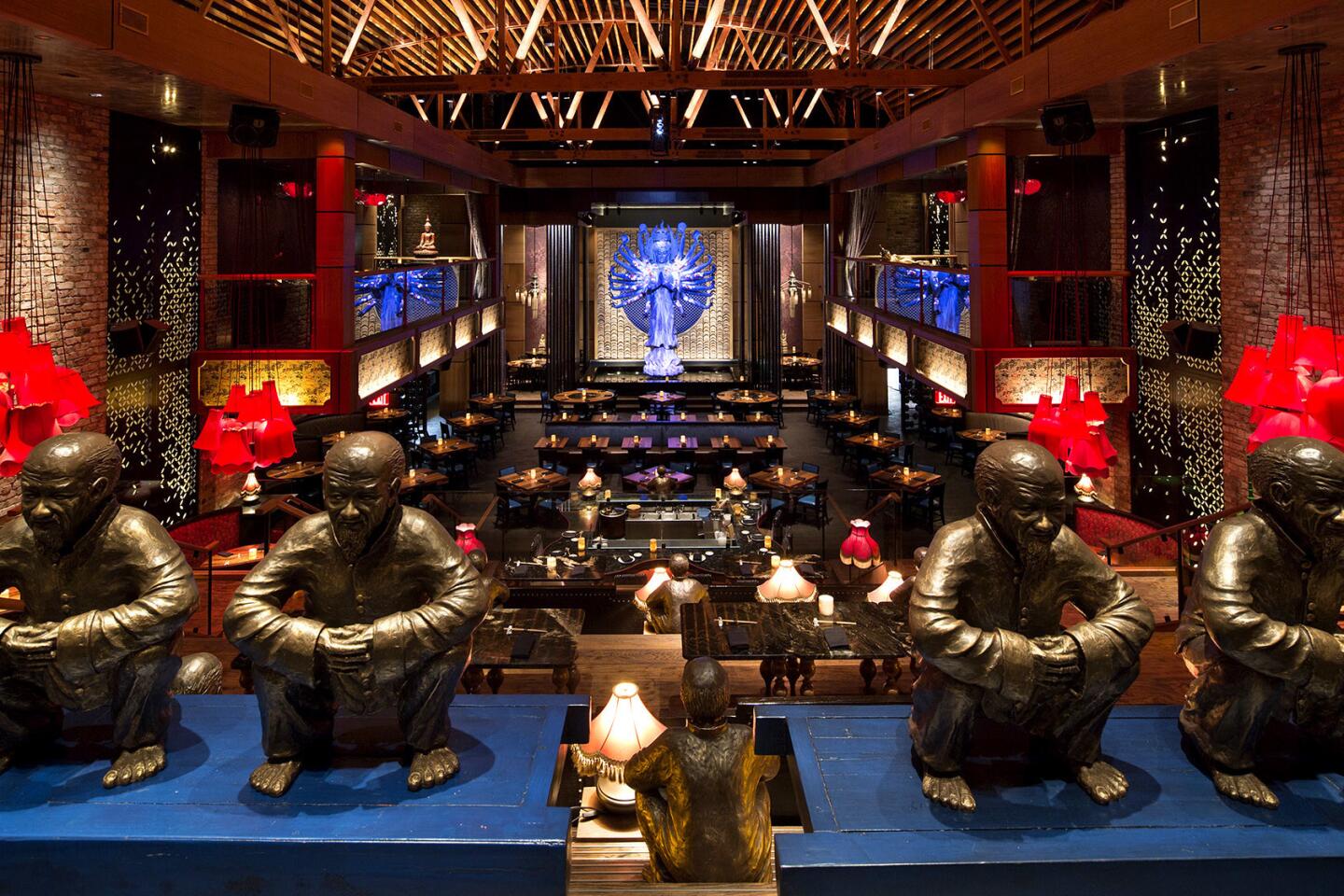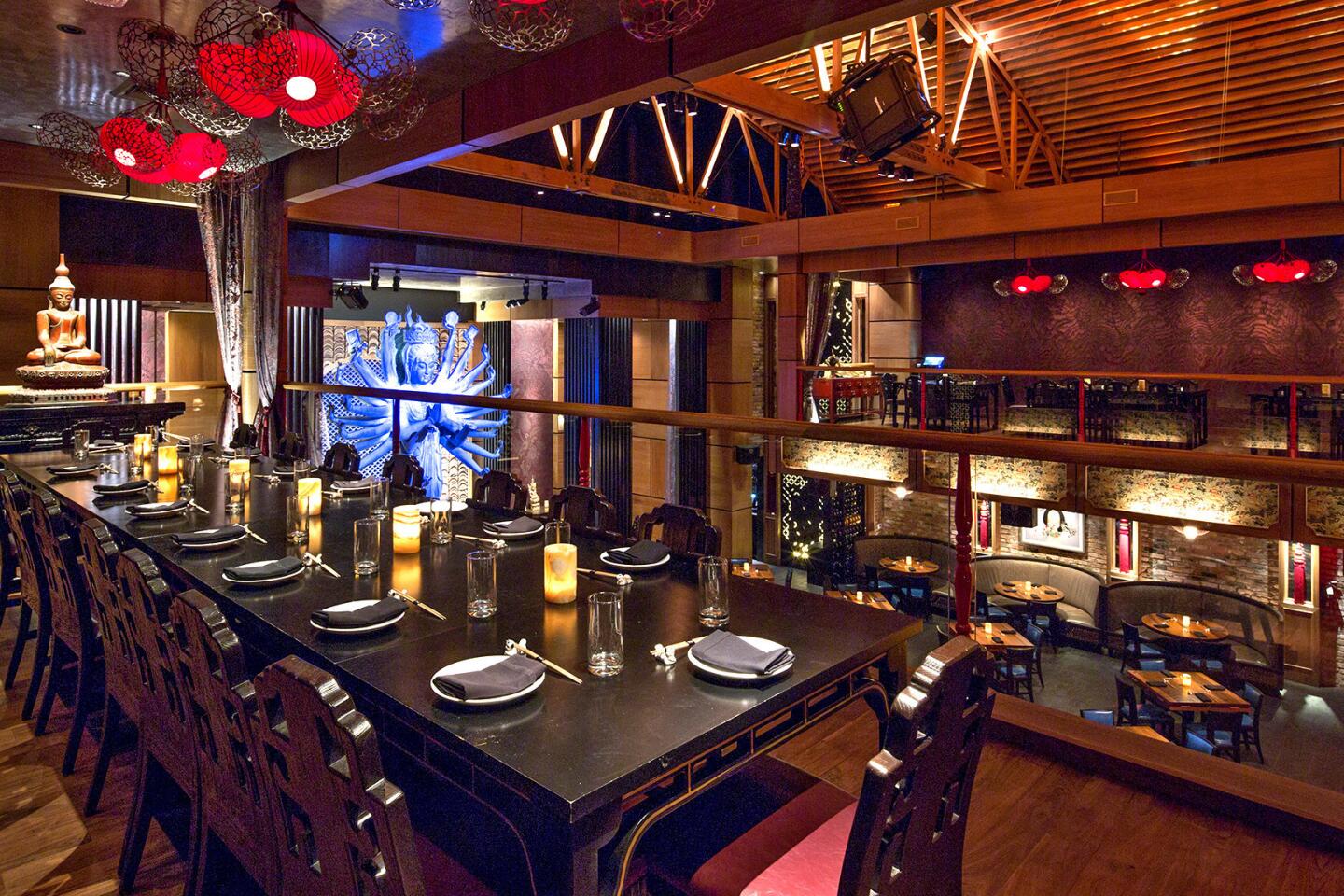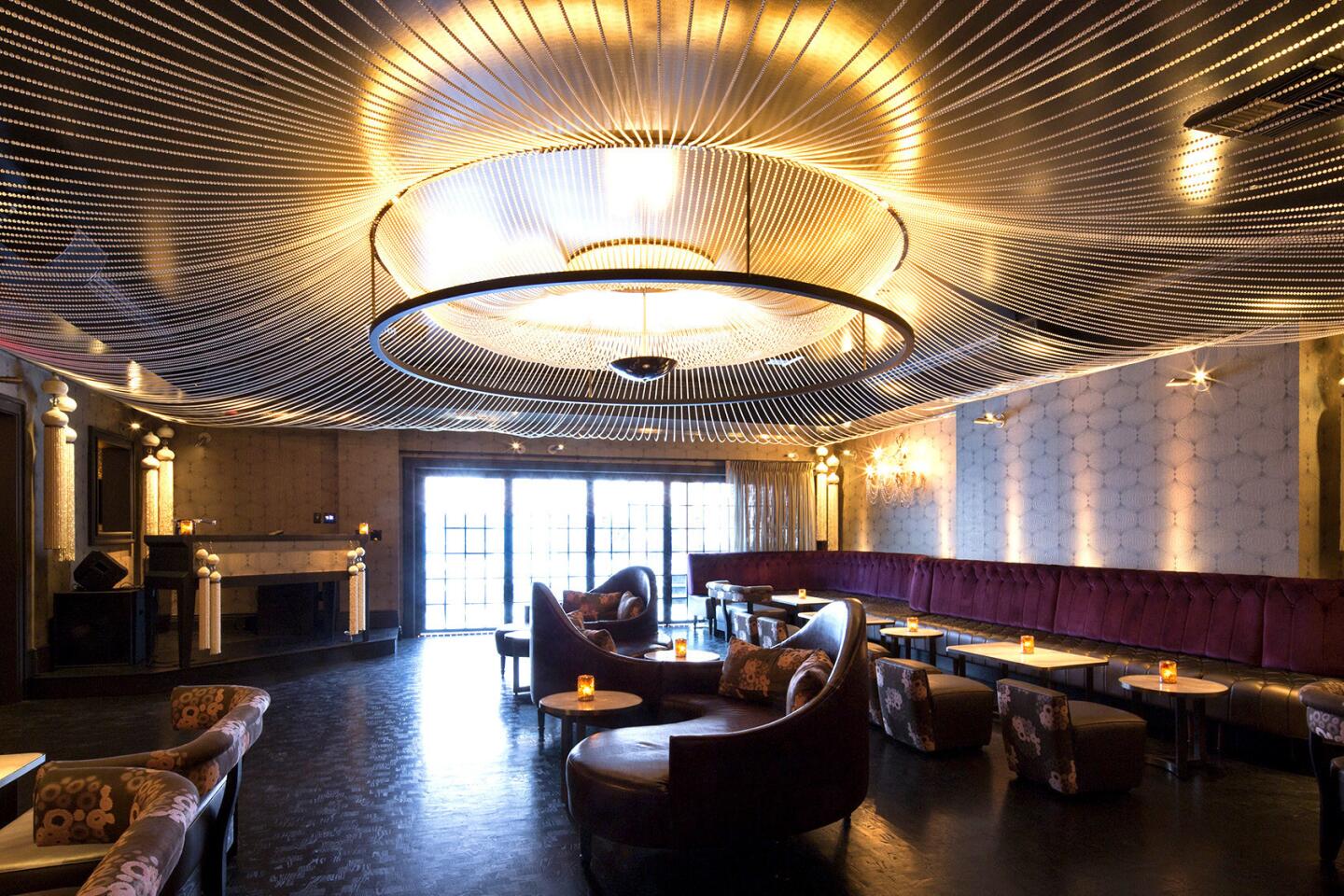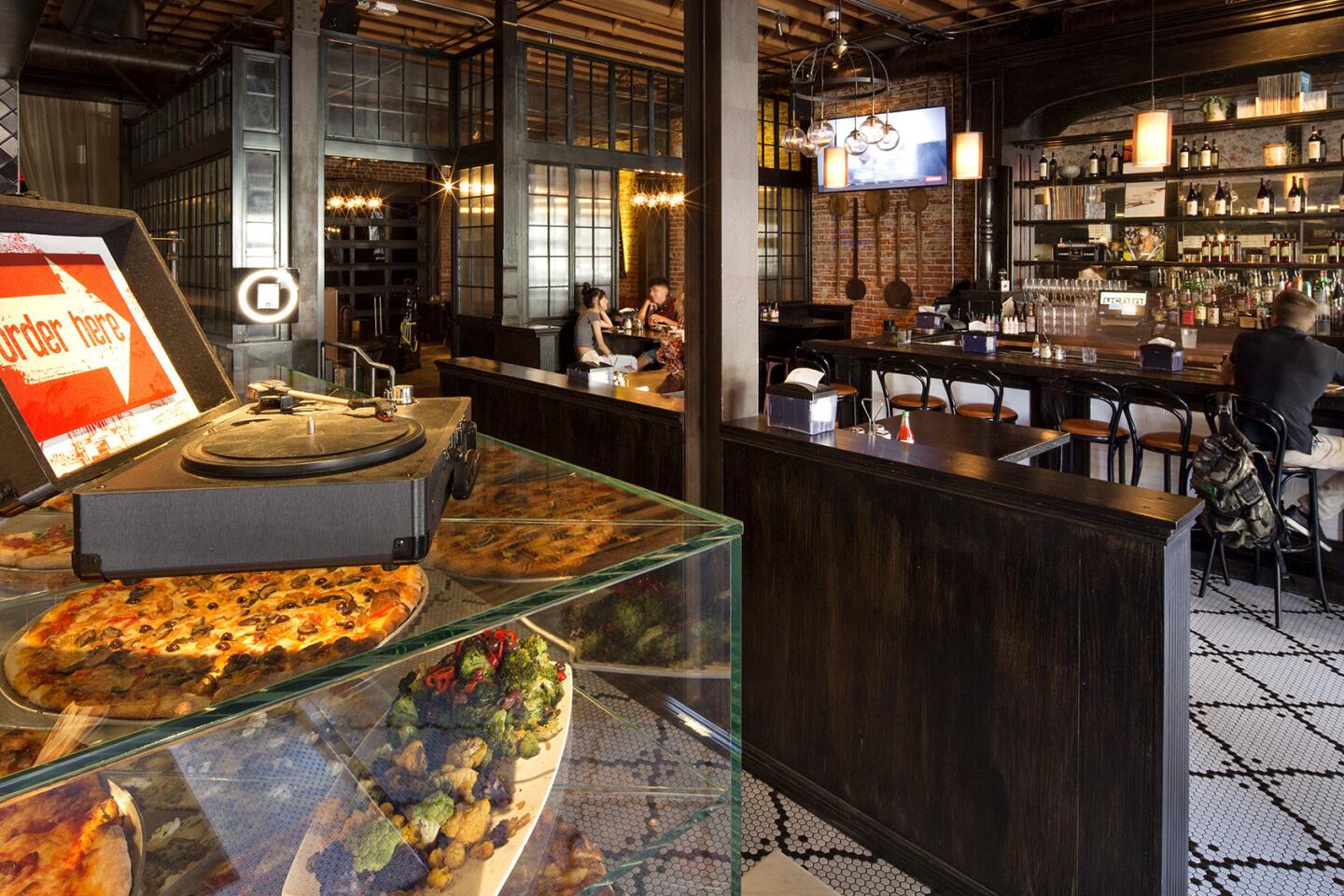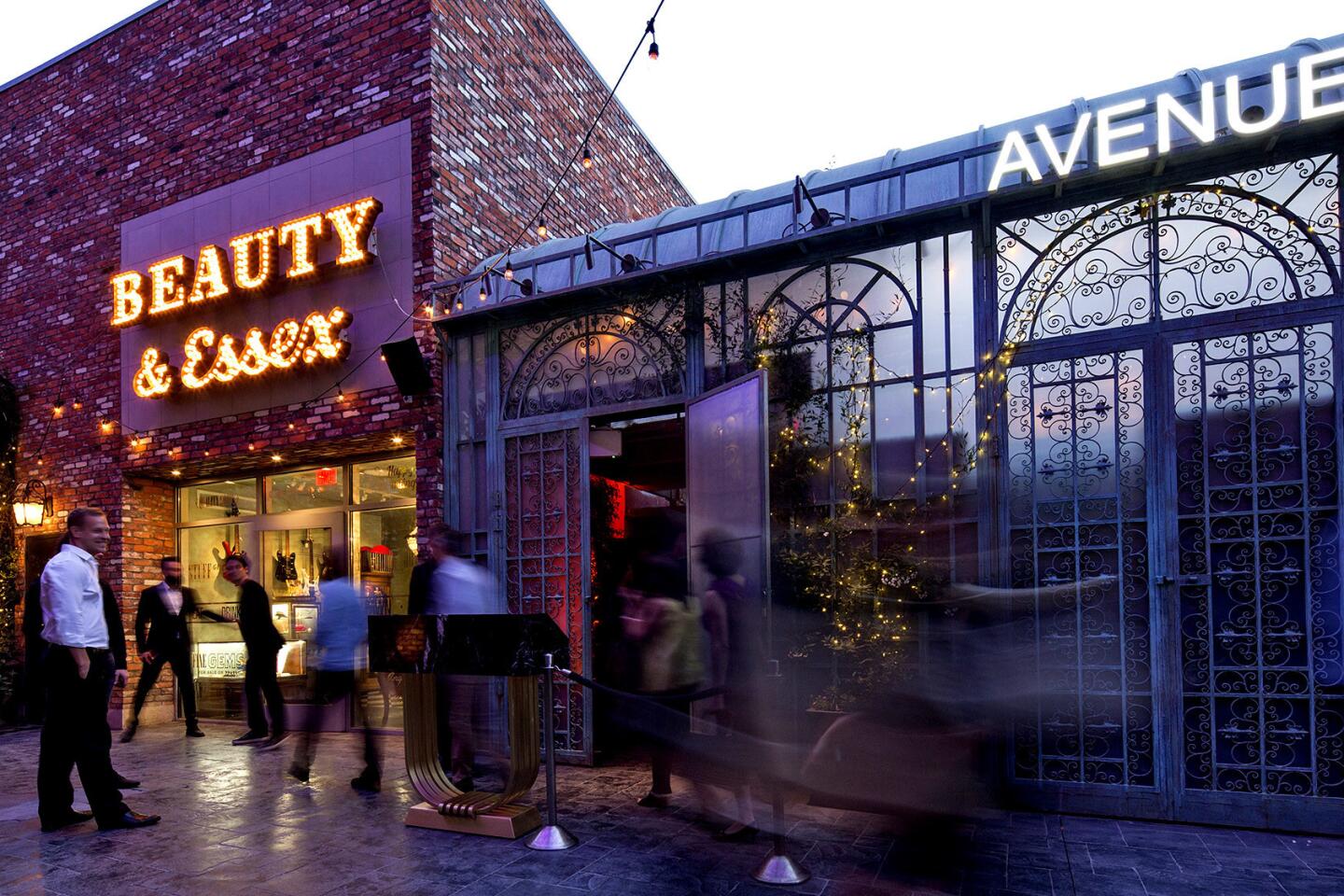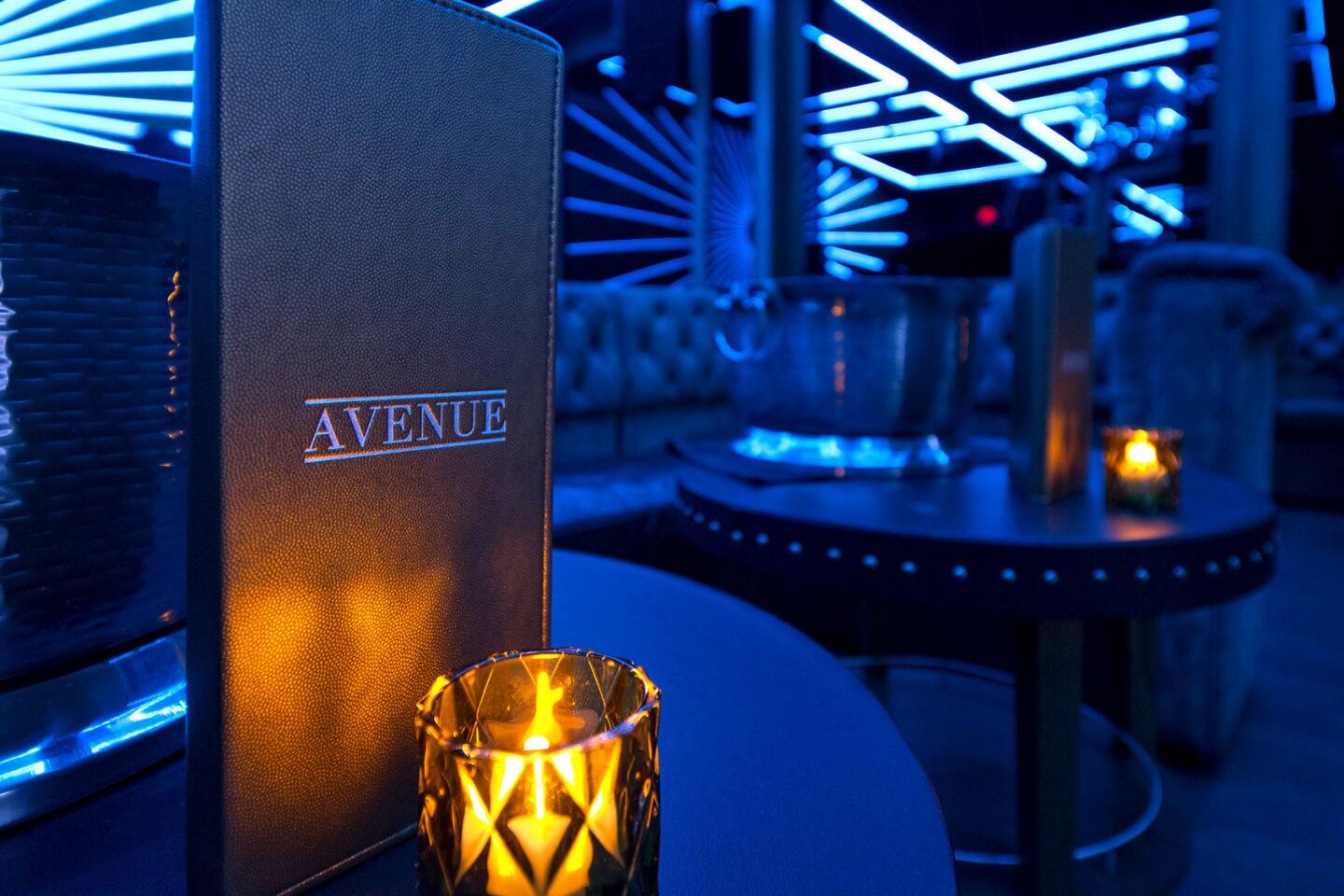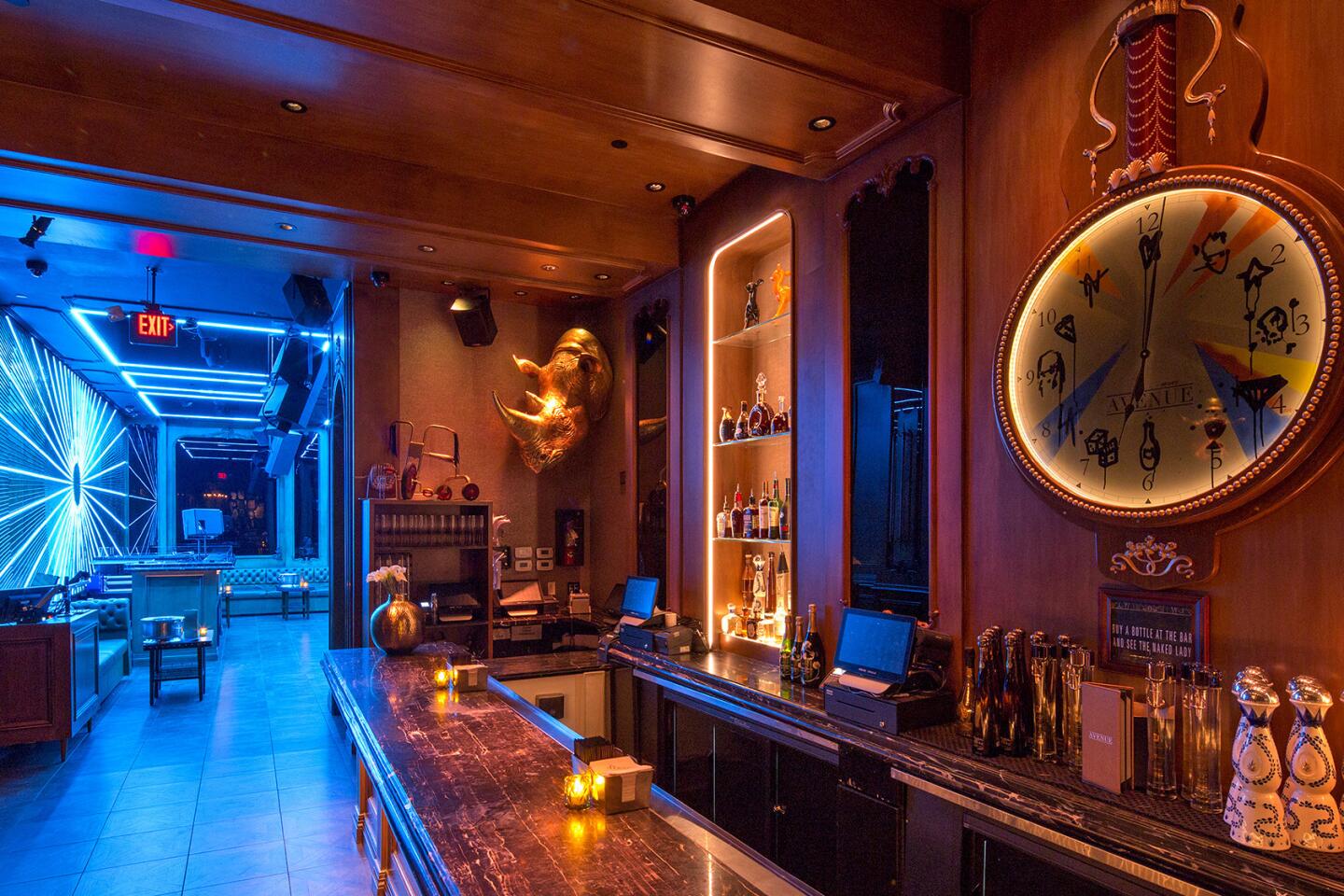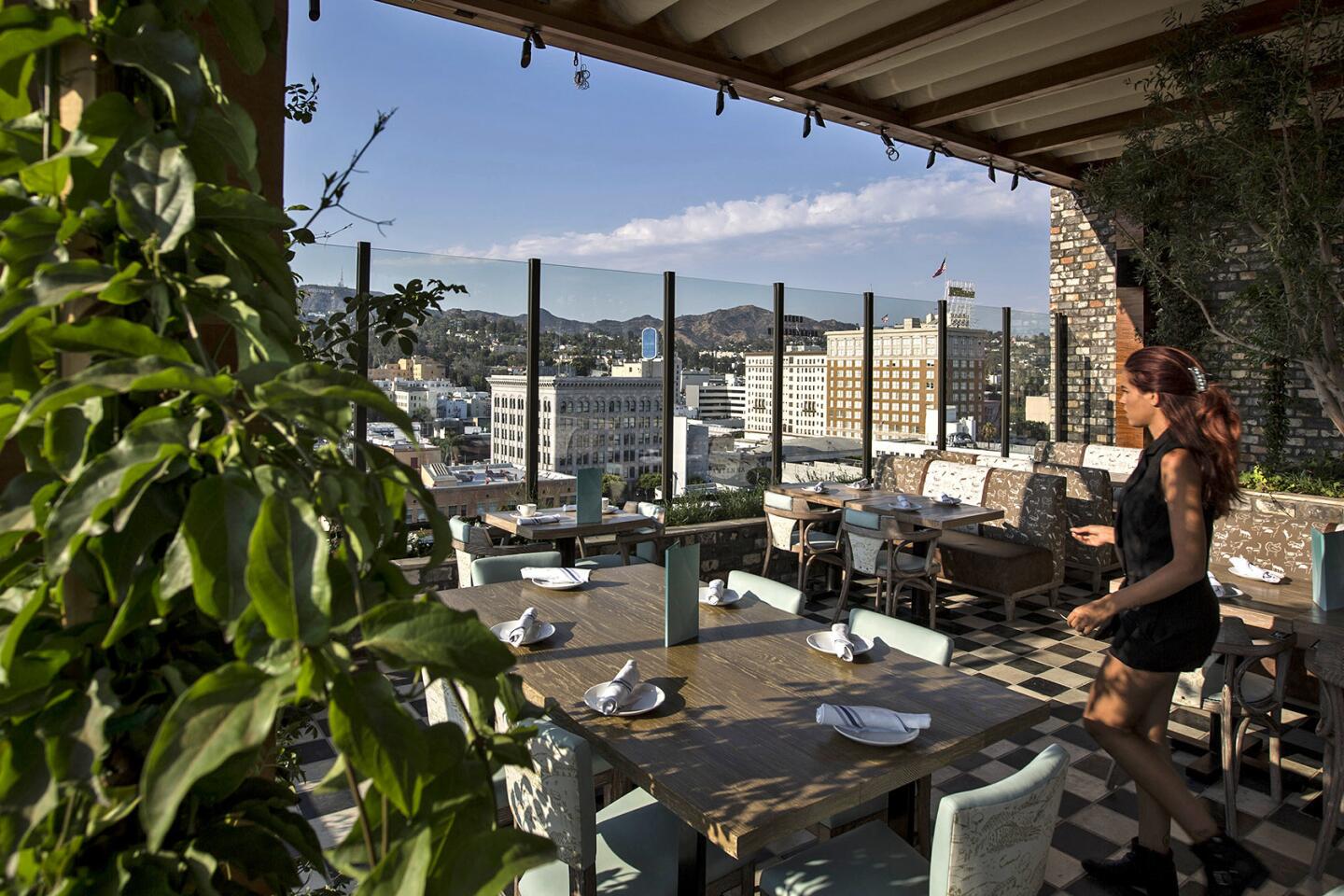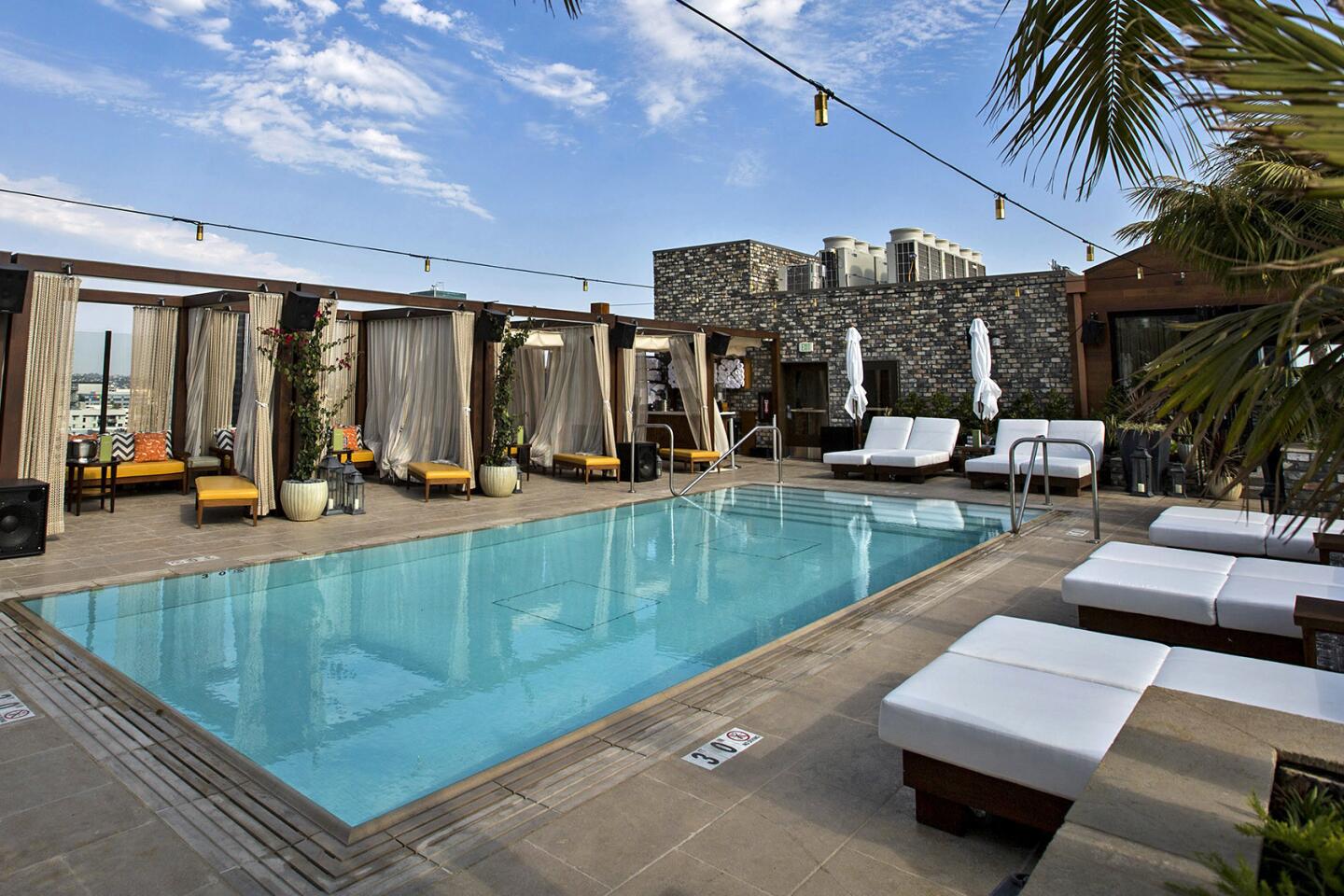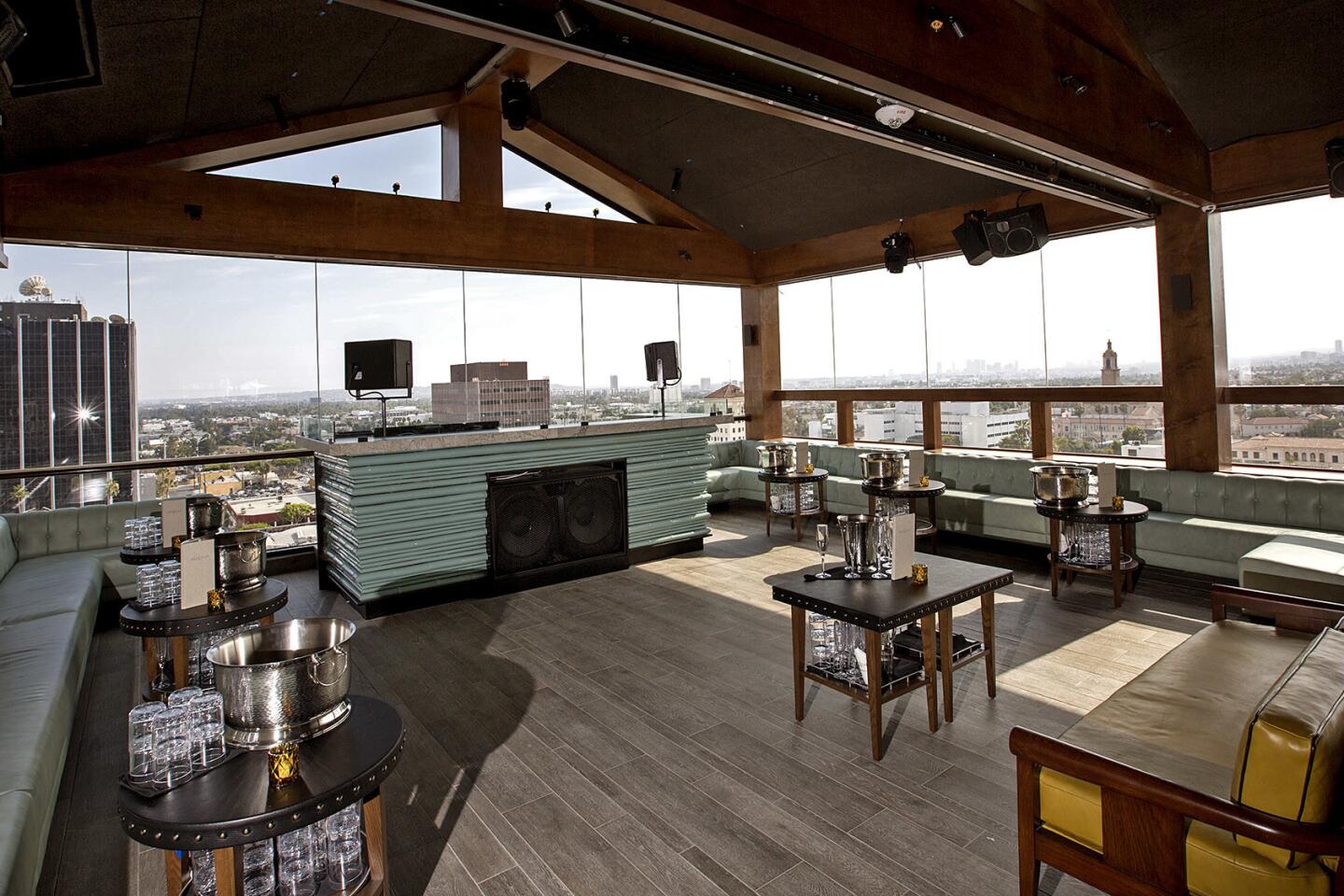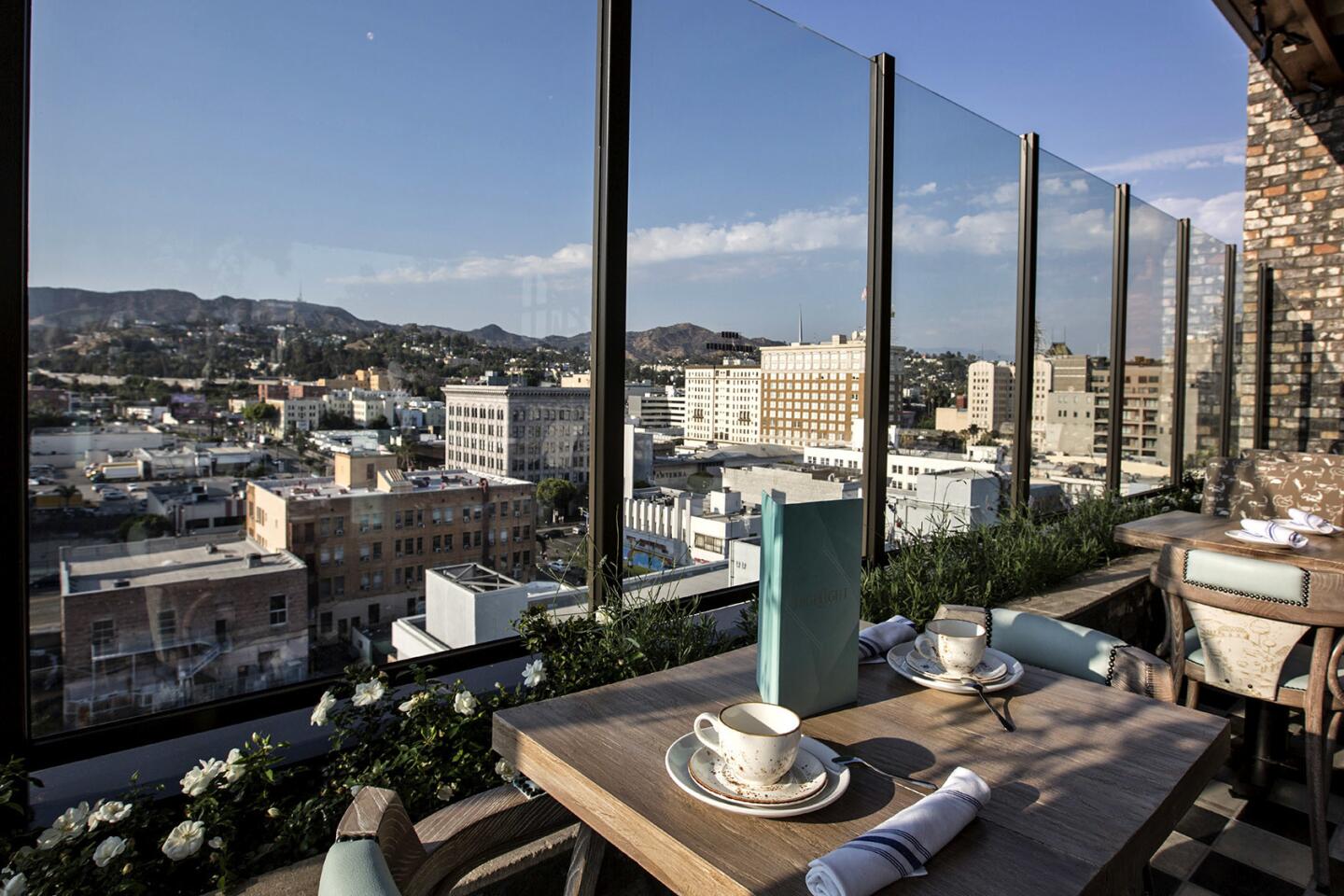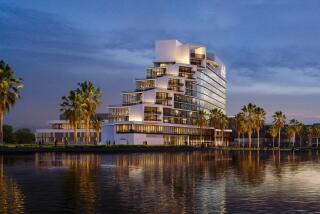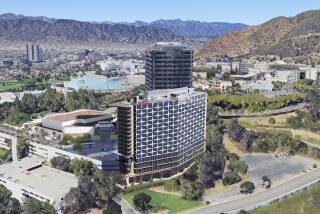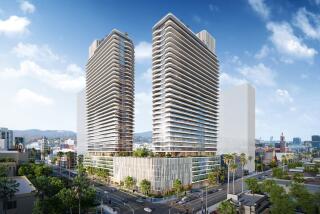With retractable pool and Tao restaurant, flashy Dream Hotel anchors new Hollywood revival
From top to bottom, the futuristic-looking Dream Hotel tries hard to live up to its name.
The centerpiece of a $110-million hospitality complex, it features a front lobby and bar that will open entirely onto the street — providing a new way to enjoy an indoor-outdoor experience in Southern California.
For the record:
7:47 p.m. Jan. 9, 2025A previous version of this article stated that the hotel was conceived in a Modernist style reminiscent of architect Richard Neutra by Killefer Flammang Architects. It was the hotel interiors that were designed in that style by Rockwell Group.
On the rooftop, it has a pool for daytime lounging that in the evening can be converted into a dance floor at the flick of a switch.
“It’s an integrated urban resort,” said Dream developer Richard Heyman, who helped build the House of Blues nightclub that invigorated the Sunset Strip in the 1990s.
And there are four restaurants where patrons can choose to dine, including the first West Coast outpost of Asian-themed Tao, one of highest-grossing restaurant groups in the country.
Now, after a decade-long odyssey to market, the slim nine-story tower is expected to open next week.
But it’s hoped that the boutique lodging with 178 rooms will be more than just the latest entrant in a hot Hollywood market, where two other high-end hotels are expected to open this year.
The idea is that it will be a cornerstone of a new zone of hotels, restaurants, bars and shops similar to Manhattan’s trendy Meatpacking District, where an old urban industrial district has become an upscale neighborhood flush with restaurants, shops and hotels.
Already, the once-neglected neighborhood southwest of the intersection of Hollywood Boulevard and Vine Street has seen stylish boutiques and gluten-free restaurants edge out tattoo parlors and dive bars in recent years.
Now, with billions of dollars’ worth of new development complete or underway on nearby Vine, the blocks around the Dream Hotel at Cahuenga Boulevard and Selma Avenue are seeing a wave of investment targeting locals out for good time and out-of-towners trying to avoid Hollywood’s most touristy haunts.
Still, the Dream complex is long on flash.
The hotel — with a cutout facade that changes color at night — was conceived by Killefer Flammang Architects, which was the project architect. The hotel interiors were designed by Rockwell Group in a Modernist style with a nod to master mid-century architect Richard Neutra.
Other buildings in the nearly block-sized complex are made of reclaimed bricks, and house eateries and bars. Among them is the fancy Avenue nightclub furnished with wood, marble, leather and a $50,000 cuckoo clock. A working pawn shop off the alley serves as the not-so-secret entrance to Beauty & Essex, a Hollywood version of a Lower East Side restaurant of the same name run by celebrity chef Chris Santos.
There is also Luchini, a pizza parlor brew pub connecting the alley to Cahuenga Boulevard, and a few pop-up shops are planned.
The Dream complex is influenced by live theater, with each restaurant displaying its own sense of theatricality, said architect Shawn Sullivan of Rockwell Group, a New York interior design firm known for creating stage sets and high-end restaurants and hotels.
Tao, for example, is intended to feels like it is set on the steps of an ancient temple, an impression enhanced by a vast scale unapparent from the street.
Visitors enter through a corridor lined with stone columns before emerging into a wide bar where a 20-foot statue of a multiarmed goddess known as Quan-Yin looms tall in the distance under a high wooden bow-truss ceiling. Tables for diners are on the broad, wide steps leading to the goddess as well as on the floor in front of the statue and balconies looking down on it.
“The stairway itself is part of the stage,” Sullivan said. “Celebrities who might normally prefer a quiet VIP room may prefer the steps.”
Tao in Las Vegas was the highest-grossing restaurant in the United States last year with nearly $48 million in sales, according to Restaurant Business magazine. The two Tao restaurants in New York were also among the country’s top-grossing eateries. The Hollywood Tao is fourth in the chain, and paparazzi are already staking it out.

The rooftop pool was a project in itself. It features a floor that is raised by a $300,000 hydraulic lift made by a Canadian firm that has created complex water features for Cirque du Soliel. The goal is to keep the roof, which has a 500-person capa
The rooftop pool was a project in itself. It features a floor that is raised by a $300,000 hydraulic lift made by a Canadian firm that has created complex water features for Cirque du Soliel. The goal is to keep the roof, which has a 500-person capacity, active from breakfast through late-night cocktails.
Visitors can reach the roof without passing through the lobby by entering from an alley that has been taken over by the Dream complex. The alley, once a haven for drug dealers, is now covered in slate flagstones and set off by ivy-covered pergolas.
Hospitality industry analyst Bruce Baltin of PKF Consulting said the Dream, like the splashy nearby W Hotel and renovated historic Hollywood Roosevelt Hotel, is a “lifestyle” hotel, pitched to people more interested in having a special experience than the reliable predictability of a chain.
“Hollywood is a hot market right now,” he said. “Hotels in Hollywood are doing very well.”
The area used to be considered a low-priced alternative for lodging in Los Angeles, but demand for rooms has been growing as the entertainment industry rediscovers the neighborhood alongside tech business newcomers, he said.
That has enabled operators to charge more, with the Dream’s nightly rates expected to start at about $300.
Two other hotels will open in Hollywood this year: The 216-room Kimpton Everly Hotel at 1800 Argyle Ave. and the 112-room Hampton Inn & Suites at 1133 Vine St.
Baltin predicts the additional rooms will drive the area’s overall hotel room occupancy rate down slightly to a still-healthy 78% by the end of this year, while average room rates compared with last year will tick up $11 to $267 a night.
The development is part of an overall hotel construction surge in the state, according to consulting firm Atlas Hospitality Group.
There were 130 hotels with a combined 18,271 rooms under construction at the end of June, a 17% increase over the same period last year, Atlas said. Los Angeles County leads the way with 4,585 rooms.
But for all the demand, getting the Dream Hotel to market wasn’t easy. The developers secured city approvals in 2008, but then the financial crisis hit.
Grant King, who co-founded Relevant Group with Heyman, said he spent years in Shanghai, raising money through the federal EB-5 program, which provides green cards to immigrant investors who put up a minimum investment of $500,000 for development in targeted areas.
King raised about $300 million, which he and Heyman will also use to fund development of four more hotels in the neighborhood and several additional restaurants. Work on some of them is already underway.
“We’re trying to create our own Meat Packing District,” King said. “Hollywood and Highland is Times Square. This will be Meat Packing.”
Competing developer Shaul Kuba, whose company CIM Group owns the Hollywood and Highland entertainment center, said the Dream project elevates Hollywood in general.
“The entire corridor going east from Highland is slowly getting better,” Kuba said. “A project of this magnitude and vision is positive in all directions.”
Twitter: @rogervincent
ALSO
Brand-new Sunset Strip apartments to become deluxe extended-stay hotel
Wilshire Grand Center, tallest skyscraper in the West, debuts in downtown Los Angeles
Urban-style upgrade planned for Warner Center complex as Woodland Hills gets citified
More to Read
Inside the business of entertainment
The Wide Shot brings you news, analysis and insights on everything from streaming wars to production — and what it all means for the future.
You may occasionally receive promotional content from the Los Angeles Times.
